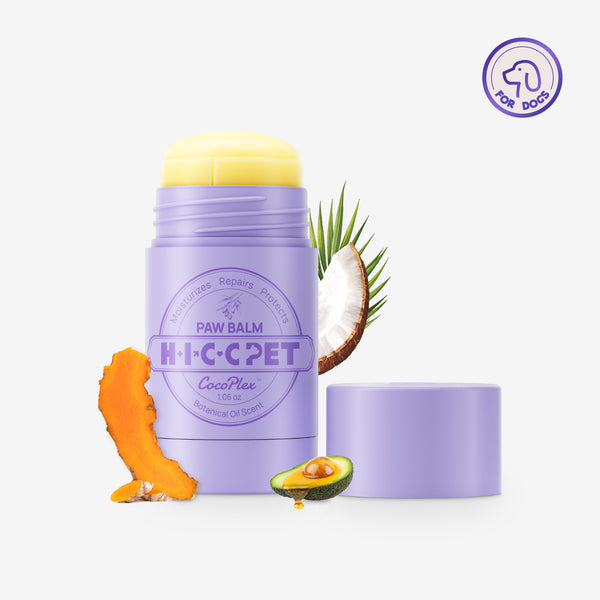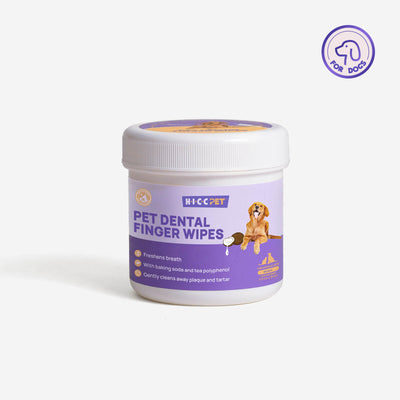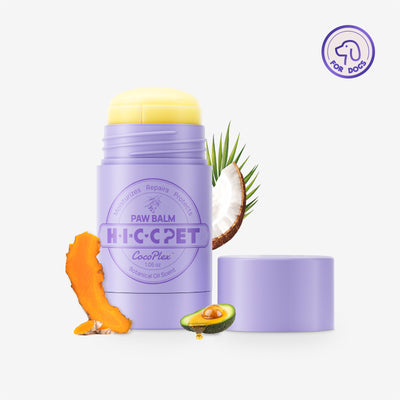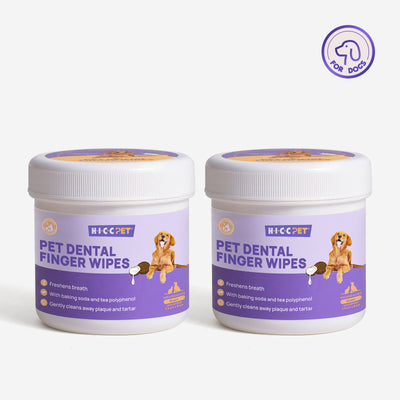So your dog has a paw infection? Don't worry; plenty of ways to help your fluffy companion. We love to see our pets playing outside, but sometimes dirt carries harmful bacteria. You can't protect your pets from everything, but you can learn to stop and treat paw infections naturally or with high-quality pet healing products.
Pododermatitis, a dog's paw infection, is common in canines. It's a condition that affects the pads of their paws, causing inflammation and soreness. Today, HICC PET™ discusses what Pododermatitis is, the symptoms and causes, diagnosing and treating the condition, natural ways to treat it, and prevention strategies. Let's get started!
What Is Pododermatitis in Dogs?
Pododermatitis is an inflammation of the paw pads that mainly affects dogs. The illness can range from mild to severe. In bad cases, it is a painful condition that makes it difficult for dogs to walk and stand.
The condition happens for different reasons. Some common reasons for infected dog paws include:
1. Bacterial or Fungal Infections
Bacterial and fungal infections can lead to inflammation and irritation. These infections start from contact with contaminated surfaces, such as grass and soil.
Visible signs: Red or swollen paws with bumps, ulcers, or discharge. Dogs may lick their feet constantly for relief.
2. Allergies
Allergies are a common cause of Pododermatitis. Allergens, such as pollen, mold, dust mites, or any contact with the allergen may cause inflammation and irritation in the paws.
Visible signs: red inflammation in the paws and non-stop itching. The area may have red and brown fur stains if yeast overgrowth occurs.
3. Overgrowth of Fur
If a dog's fur is too long and thick, it can cause friction between the paws and the ground, leading to redness, swelling, and pain. The quick schedule is to trim the fur and create a regular grooming routine.
Visible signs: paw inflammation, lesions, redness.
4. Trauma or Immuno-deficiency
Trauma, such as a cut or puncture wound, can cause inflammation, irritation, or poor immunity.
Visible signs: scabbing, crusting, and blisters. All four paws may be affected by immune-based infections.
If you are unsure whether your pup has an infected dog paw, consulting a veterinarian will help. If you suspect that they may have Pododermatitis, there are ways to naturally treat the condition.
Symptoms of Pododermatitis in Dogs
The most common symptom of Pododermatitis is inflammation of the paw pads. If your dog has a dog paw infection, you may see the following signs:
- Redness
- Swelling
- Wincing when walking on paws.
- Limping to avoid putting pressure on the area
- Licking or chewing the infected foot.
- Scabbing
- Ulcerations
- Crusting on paws
- Cracked or bleeding paws
If the condition is left untreated, it can lead to secondary dog diseases, like bacterial, fungal, viral, or parasitic infections from fleas, mites, and ticks. Luckily, there are fast-acting solutions that quickly treat dog paw infections.
Diagnosing Pododermatitis in Dogs
If you suspect your pup has a dog paw infection, a vet can examine them for further diagnosis. Your vet may ask questions about your dog's health history, such as their diet and any recent changes in their behavior.
During the examination, the vet will check for any signs of inflammation, redness, or discharge. Your clinician may recommend a vet-approved skin care product depending on the testing results.
Treating Pododermatitis with Medication
To treat the infected dog paw, your vet may prescribe a series of medications like antibiotics or antifungal drugs, creams, and ointments. Following your vet's instructions is essential to remedying severe dog paw infections. For pet owners that enjoy natural solutions without synthetic chemicals, read further to learn natural methods of treating dog paw infections.
Natural Ways to Treat Pododermatitis in Dogs
In addition to medication, several natural ways to treat Pododermatitis in dogs exist. These include:
-
Omega-3 fatty acids: Omega-3 fatty acids have anti-inflammatory properties that can help reduce inflammation and irritation. Fatty acids come from either fish oil supplements or cold-water fish, such as salmon and tuna.
-
Apple cider vinegar: Apple cider vinegar is a natural antiseptic that can help reduce inflammation and itching. You can dilute the vinegar with water and apply it to the affected area.
- Coconut oil is a natural moisturizer that can help soothe irritated skin. You can apply a small amount of the oil directly to the affected area.
-
Baking soda: Baking soda is a natural exfoliant that can help reduce inflammation and irritation. Mix baking soda with water and apply it to the affected area.
- Aloe vera: Aloe vera is a natural healing agent that can help reduce inflammation and discomfort. You can apply aloe vera gel directly to the affected area.
For more natural remedies to treat dog paw infections, we recommend HICC PET™ skin care products. These products come with non-toxic and organic disinfectants to cleanse the infected site and stop bacteria from growing. For the best results, try pet skin care products infused with baking soda, coconut oil, and aloe vera for a soothing combination remedy.
How to Treat Dog Paw Infection at Home
There are also several home remedies that you can use to treat dog paw infections at home. An effective pododermatitis dog paw home remedy includes:
-
Anti-itch relief sprays: Use pet itch relief sprays to soothe the infected area. Find a high-quality pet itch relief spray that won't sting or burn, works on contact, and slows down bacterial growth.
-
Epsom salt baths: Epsom salt baths can help reduce inflammation and irritation. You can soak your pet's paws in an Epsom salt bath for 10-15 minutes once or twice daily.
-
Cold compresses: Cold compresses can help reduce swelling and pain. You can apply a cold compress to the affected area several times daily.
-
Apple cider vinegar foot soaks: Apple cider vinegar foot soaks can help reduce inflammation and itching. You can soak your pet's paws in an apple cider vinegar bath for 10-15 minutes once or twice daily.
-
Turmeric: Turmeric is a natural anti-inflammatory agent that can help reduce swelling and discomfort. You can mix turmeric with water and apply it to the affected area.
- Pet wipes: Search for natural pet-safe wipes that remove dirt from pet paws daily and fight everyday infections and skin irritations like ulcerations and sores.
Prevention Strategies for Dog Paw Infection
The best way to treat Pododermatitis in dogs is to prevent it from occurring in the first place. Below is a step-by-step to stopping a dog paw infection:
1. Regularly trim your dog's nails: Overgrown nails can cause the paw pads to shift, leading to discomfort and possible infection.
2. Use pet wipes to keep paws clean: Wipe your dog's paws with organic pet wipes after walks or playtime, especially if they have been walking on damp surfaces. Allow air-drying.
3. Avoid harsh surfaces: Avoid walking your dog on rough or hot surfaces, such as concrete, pavement, or hot sand.
4. Check your dog's paws regularly: Check your dog's paw pads for any signs of redness, swelling, or discharge. If you notice these symptoms, take your dog to the vet immediately.
5. Use paw protectors: Consider using paw protectors, especially when walking on rough or hot surfaces.
6. Manage allergies: If your dog has allergies, work with your vet to manage them effectively, as allergic reactions can lead to pododermatitis.
7. Maintain a healthy diet: A balanced diet is essential to keep your dog's immune system strong, which helps prevent infections.
8. Provide comfortable bedding: Provide your dog with comfortable bedding, as this can help prevent trauma to their paw pads.
9. Don't allow your dog to lick their paws excessively: Excessive licking can lead to bacterial or fungal infections, so discourage your dog from doing this.
By taking these steps, you can help prevent pododermatitis in your dog and keep its paw pads healthy and pain-free.
Common Questions about Pododermatitis in Dogs
Q: How long does it take for Pododermatitis to heal?
A: It depends on the severity of the condition and the treatment. In most cases, Pododermatitis treatment lasts a few weeks. However, in more severe cases, it may take longer.
Q: Can Pododermatitis be prevented?
A: Yes, there are several steps you can take to reduce the risk of Pododermatitis in dogs. Be sure to keep their paws clean and dry, and check for any signs of redness or irritation. You should also keep your pet away from areas containing allergens, such as grass and soil.
Q: Is Pododermatitis contagious?
A: No, Pododermatitis is not contagious. However, it can develop from contact with contaminated surfaces, such as grass and soil.
Stop Dog Paw Infection With HICC PET™ Natural Skin Care
Regarding reducing dog paw infections, HICC PET™ has your back. We supply natural pet skin care products that strengthen your pet's immunity, leave pet paws feeling brand new, and make coats soft and fluffy. Products like our pet glove wipes prevent bacteria that cause dog paw infections and other skin irritations. We pride ourselves on supplying cost-effective and convenient care to every household with a furry friend.
We provide helpful pet tips to reduce the risk of Pododermatitis in dogs and other common conditions. For more product information, visit us online and subscribe to our pet community.
Please note that the information provided in this article is for educational and informational purposes only. We are not veterinarians, and the content shared here should not be considered professional veterinary advice.
If you have any questions regarding copyrights or the use of materials in this article, please contact us for clarification.







Thanks for your interaction and support.